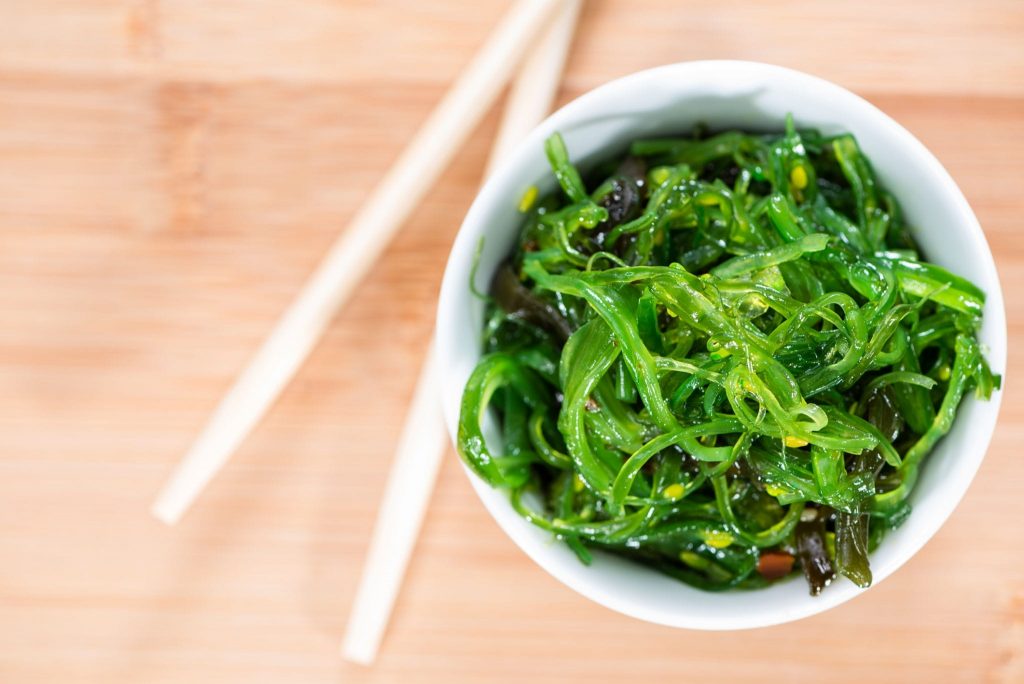Perhaps you are curious about seaweed iodine content, since there is no doubt it contains a good amount of this mineral.
Or, what the best types of seaweed are that are rich in iodine.
If you absolutely love seaweed, or you follow a plant-based diet, then this post is for you!
Today, you’ll learn everything you need to know about iodine in seaweed and the best varieties to eat for iodine supply. Discover the surprising facts about seaweed iodine that you never knew!
Seaweed Iodine – How Much Iodine In Seaweed
Edible seaweeds are quite popular in various Asian countries. This marine plant is common in seawater, which is why it is a notable source of iodine.
With the right amount of seaweed consumed daily, it should suffice for eliminating symptoms linked with iodine deficiency. On the other hand, too much can be harmful to your health.
This is why it is best to stick to 150 micrograms of iodine for adults and a little higher for pregnant and nursing women.
The iodine component in seaweed depends on the variety. For instance, the iodine content in nori is between 29.3 to 45.8 milligrams per kilo while it is 93.9 to 185.1 milligrams per kilo for wakame.
Kombu, however, has the most amount of iodine at 241 to 4921 milligrams per kilo. This is why it is important to limit your intake of these seaweeds to make sure you are not exceeding the recommended safe amount of this mineral.
Does Seaweed Have Iodine
As mentioned above, seaweed is a notable source of iodine. In particular, you can get a high amount of this mineral simply by eating half a kilo of kombu.
But there are dangers to eating too much, which can result in thyroid hormone issues.
In Japan, there are more than 20 species of green, brown, and red algae or seaweed. These are commonly included in various dishes. The iodine content in the types of seaweed varies, depending on the preparation, harvest location, and the species.
Generally, sun-bleached blades have lower iodine content while fresh cut blades have the highest. In dried nori, for instance, it contains 16 μg/g iodine while in dried kelp flakes, there is more than 8,000 μg/g of iodine.
However, with kombu, the amount is even higher. Japanese kombu, as an example, has an iodine content of 2353 μg/g.
As for the 10 different species of kombu, the iodine content is often at 1,542 μg/g for the dried variety.
It is important to note that the iodine content decreases based on the consumption or cooking method. Most seaweed is added to soup stocks as a flavoring to the dish.
When you put kombu in boiling water for as little as 15 minutes, about 99 percent of the iodine content is lost. As for a brown seaweed called sargassum, the iodine loss is about 40 percent when boiled in water.
There is also a processing method for kelp that involves boiling it in dye for 30 minutes before leaving it out to dry. When it is done, this decreases the iodine content even before consumption.
Final Words On Seaweed Iodine
Overall, seaweed is a great source of iodine. If you are vegan or doing a plant-based diet, you can get a good amount of this mineral by adding seaweeds to your diet daily.
But do take note that depending on your way of preparing and consuming seaweeds, the total iodine component may be reduced.
Different seaweed varieties also contain varying amounts of iodine. So, it is best to know the right way of preparing seaweeds with minimal iodine content loss. This way, you can reap the nutritional and health benefits that this marine plant has to offer.

